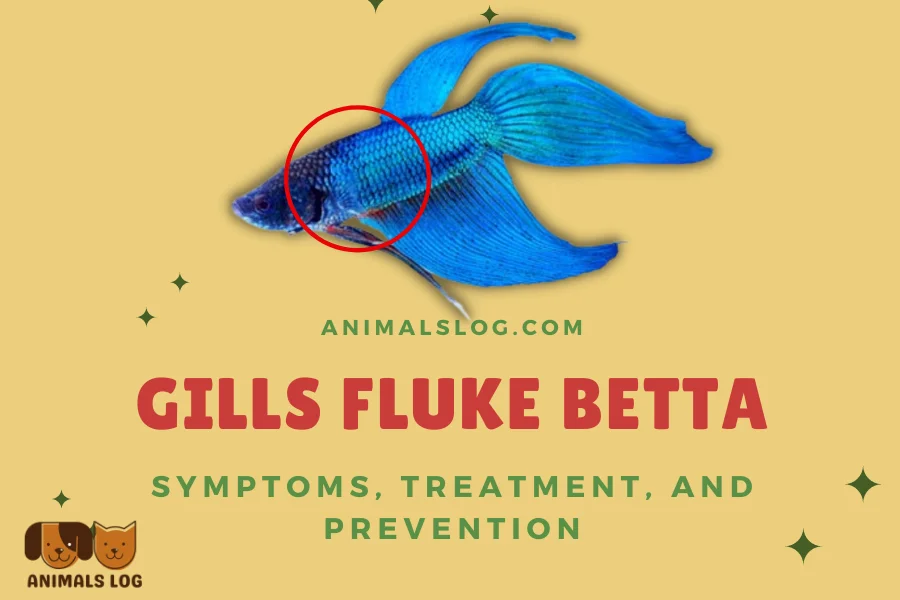Parasites in aquariums are usually one of the last things every hobbyist wants to encounter, but they are a reality for everyone. To give your Betta the best chance of overcoming illness, you should act promptly if you believe it is ill.
When you determine what is wrong with your Betta, you should provide treatment so that it has a chance of recovering. Identifying parasites as soon as possible is the key to treating them successfully.
There are a few types of parasites that you will need to pay attention to. A gill fluke in betta is an example of a parasite. It may occur anytime in your aquarium.

Parasites, Dactylogyrus that live in koi’s gills are called gill flukes. Gill worms can therefore become potentially deadly parasites, even though they will not grow to a size greater than 0.1 to 0.3 mm. Gill flukes resemble skin worms.
Fish species possess specific gill flukes. During the spawning season, a gill fluke that lives on koi does poorly on sturgeon. Despite this, gill flukes can remain in the system for some time in different fish species.
Gill flukes with adult appearances are hermaphrodites because they contain both female and male reproductive organs. The adult gill flukes can produce four to ten eggs per day; larvae or eggs are born from these adults. Cilia facilitate free swimming in the water, allowing the eggs to search for a host within 8 hours of hatching. As the water temperature drops, maturation rates slow down dramatically, so does time between larva and adult.
How can you identify the symptoms?

The presence of a gill fluke in betta can be harder to detect than that of an ich or velvet infestation because these parasites aren’t usually visible on the skin. The only way to tell if your fish truly has gill flukes and not another disease or infection is without taking a sample of its skin and checking it under a microscope. Unless you do that, you will never be able to be certain.
You must be familiar with the symptoms of gill flukes so that you can treat them. The following are some common symptoms.
The breathing is rapid, the gills are open, and the fish is pale and apathetic. The presence of a small gill fluke in betta is usually not a problem. The worms can only become a problem when they reproduce massively. A lack of hygiene and excessive overstocking of aquariums or ponds may cause this to occur. Slime can also form on the fish’s gills when the fish have gill flukes or other infections. Worms permanently anchor themselves in the fish’s gills, attempting to eliminate them by forming slime.
The betta’s gill can become cloudy with mucus when they’re infected with a betta gill fluke. The process is his body’s attempt to combat the infection and eliminate any trace of infection.
The same condition can cause the mucus on his gills as columnaris, manifesting this condition. In both cases, your betta will produce mucus only on the gills, while in case your Betta has a columnar condition, mucus may be produced on other parts of his body as well.
Your betta will likely show ulcers and wounds due to a combination of damage caused by the gill flukes and the scraping. In general, they should be around his gills, but if he accidentally scrapes against something for too long, he could find them anywhere on his body.
How to treat Gill Fluke in Betta?
The issue of determining what’s causing gill fluke in betta may not be as clear-cut as we would like, so it may be difficult to find accurate, thorough, and successful treatment options. However, you can treat gill fluke in betta using several ways. As long as you act quickly, both approaches are likely to be successful. It would be a good idea to put your betta in a quarantine tank before starting treatment.
You will need to begin administering medication once your betta is transferred. Hobbyists recommend PraziPro for treating gill fluke in betta. You can also take salt baths to speed the recovery process, though these should not be done if you are unfamiliar or not ready since they may put even more stress on your Betta.
When you put medicines into your main tank, you can experience devastating results. Medications could become less effective in the future, for example. Medications can also destroy your bacteria colony, so you may have to cycle your tank again. Furthermore, ammonia concentration may spike, which will cause the cycle to fail.
The summer months are a vital time to feed your fish a good quality feed. Nutritional feed packed with all essential nutrients, vitamins, and minerals. Thus, after winter, fish will have a strong immune system. There are different reasons why ponds get overcrowded, including bad water quality and too many fish. By the directive, fish longer than 50 cm must be kept in every 1,000 liters of water. When activated carbon is utilized in a filter, purifying the water from various microdust particles has been made easier because the carbon can purify the water. With it, you can also filter out various pathogenic organisms.
How to prevent Gill Fluke in Betta
Two ways to prevent gill fluke in betta:
- You should definitely quarantine any new fish you plan to add to your tank before doing so. In general, you should quarantine new fish and plants for two to four weeks after receiving them. You will then be able to see if there’s something wrong with them.
And if they are harboring any diseases or parasites, then they will die in the tank before they have a chance to make it into your main tank. - Flushing the water frequently and regularly is important to prevent gill fluke in betta fish.
It is first important to know that removing some water from your tank will decrease the number of gill flukes around your betta, making it less likely for your fish to get sick from them.
In addition, frequent water changes will ensure that your tank is in good health. The way your tank is set up affects how much stress the betta is placed under, which in turn keeps his immune system strong.
Commonly Asked Questions Related to Gill Fluke in Betta Fish
When fish get flukes, can they recover?
If a severe, long-lasting infestation occurs, the worms damage the gill tissues badly, and they do not fully recover. However, despite successful therapy, the fish remaining short-winded will defy treatment for the remainder of their lives.
Flukes can be transmitted to humans by fish?
Clanorchis is a parasite attached to the liver of animals that humans can contract when they consume raw or undercooked fish, crab, or crayfish from areas where the parasite is present. Clonorchis is a parasite found in Asia called the Oriental liver fluke or Chinese liver fluke. Those infected with liver fluke have liver, gallbladder, and bile duct infections.
Are salt baths effective against betta gill fluke?
A salt dip may not successfully cure flukes because it can knock them off the fish, but if flukes are embedded in the inner gill area, some can still be treated if the dip penetrates the gill area. The attached fluke needs to be removed from the fish; however, this is not the whole battle.
Conclusion
It is not a pleasant experience to have a disease, illness, or parasite in your fish tank. The recovery from gill flukes in betta fish might be stressful for a few weeks, but it is possible with perseverance! Watch for lethargy, lack of appetite, and discoloration around the gills, as well as clawing against decorations, as early warning symptoms. Remove your betta fish from the tank immediately if there are no symptoms of ich, velvet, or other aquarium parasites, and begin treating them for gill flukes.




